Meet the couple who ran 6,500 miles across South America – dodging hurricane-force winds and the Venezuelan mafia
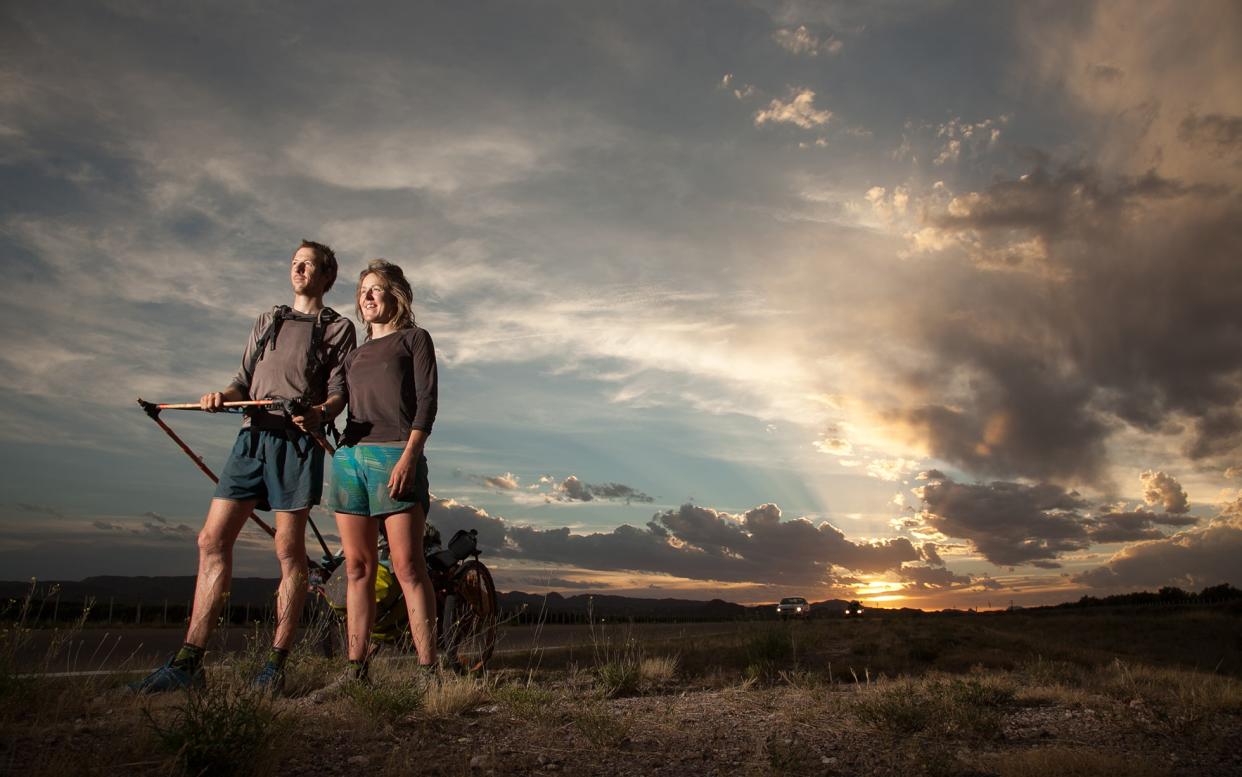
Our thermometer read 32F (0C). A blizzard tore at our faces. We could barely see the opposite bank of the metallic slick of water that rushed menacingly past us. Our only option was to swim.
It was July 28 2012 and the sound of the Olympic gun was resonating through the streets of London. However, my husband David and I were standing at Cape Froward, the southernmost tip of South America, after having forded four glacier-fed rivers, before starting our expedition: running the whole length of the continent.
We would travel 6,504 miles (10,467km) through five countries in 15 months. Starting in Chile, we would run the entire “Carretera Austral”– a 1,000-mile (1,609km) road – through temperate rainforest and under snow-capped mountains.
We averaged 20 miles a day; our longest day was 36 miles, while in remote sections we often ran marathons day after day to ensure our food supplies lasted.
We would step into Argentina’s desert and spiny chaco and enter the Amazon basin in Bolivia, running through it for 2,000 miles (3,218km) to Manaus and finally exiting it in the Guiana Shield, where we’d trot from Brazil into Venezuela and the Orinoco Basin.
The temperature would range from 14F (-10C) to more than 104F (40C); and we’d be criss-crossing the Andes in hurricane-force winds and existing in 100 per cent humidity. All the while we’d sleep by the side of the road, while taking turns to pull our home behind us in a trailer weighing up to 310lb.
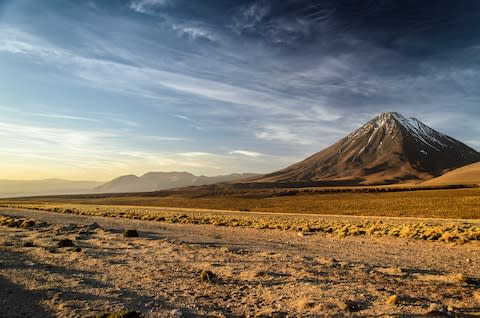
Why? More than anything else in the world, we wanted to give a voice to the wildlife and wildernesses we adore: to prove that with small steps we can tackle seemingly insurmountable challenges; that it was not too late to protect the world’s remaining unspoiled ecosystems. We raised more than $10,000 (£7,210) for three nature conservation charities: BirdLife International, Armonia Bolivia and Conservacion Patagonia.
En route, we visited two of the projects we were supporting: Conservacion Patagonia’s Chacabuco Valley grassland restoration reserve in Chile and Armonia Bolivia’s Barba Azul reserve, which is conserving the critically endangered blue-throated macaw.
Through our website, online classroom and articles for magazines and newspapers, we told the tales of the people and wildlife involved in our charities’ projects and of the ecological stories we learned about on the hoof. We presented to schools and universities about the expedition and the habitats we were running through and registered the number of distinct bird species we saw each day in a “mega-transect” that spanned the continent.
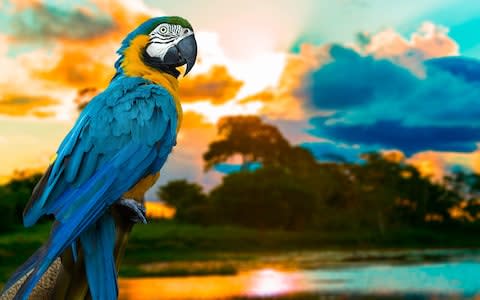
David and I both adore running. It’s what we do to relax, re-charge, and ignite ideas. Running would allow us to penetrate the moods of the land and its creatures. With only a couple of millimetres of “barefoot” shoe soles separating us from the earth’s heartbeat, we would move silently, stealthily, creeping up on wildlife, a whisper away from discovery, a step from the unknown and unexpected.
Well, that was the idea. But we had no idea how our bodies would cope with running day upon day while pulling a trailer. Ninety-five miles (153km) on from our starting point at Cape Froward, Chile, we trotted through a moonscape of tussock grasses heading north from Punta Arenas, plagued by the threat of failure. Shots of pain were ricocheting through my body, while David heralded the dawn with a line of greenish vomit, mainly comprising ibuprofen and paracetamol, which we were gulping in large quantities. Humans might be born to run, but pulling a woefully over-laden trailer on jarring Tarmac just didn’t feel natural.
In numbers | Katharine and David's epic journey
It wasn’t just our bodies that got stressed. At the start of our expedition everything we did seemed to spark a row, triggered by our permanent state of exhaustion and hunger. One night in Patagonia, David prepared a garlic, potato and sausage concoction. He presented the steaming saucepan and I drew a line through the offering, as we eyed one another menacingly and carefully spooned our allotted portion into our gaping mouths.
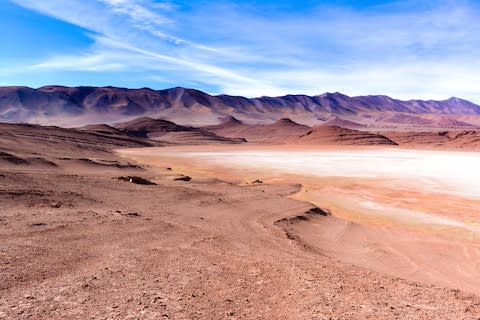
Part of my potato territory slumped and I quickly dived for a stray sausage. Sensing foul play, David whacked my fork. “That was mine,” he snarled. “I’ll have two substitute sausages thank you.” And quick as a flash he nailed two of mine. The following day, we conceded that something had to be done.
So… we bought a second food bowl and the meal time disputes dissolved. We sewed our sleeping bags together to crack the cold issue. We devised roles and routines to ease the abundant pointless disputes. Most importantly, we focused on running the next mile, around the next corner or to the end of the day, rather than upon the enormous number of miles that stretched in front of us.
Our daily concern was finding somewhere to sleep, something upon which our mileage also depended. We slept in bus shelters, lay-bys, barns, police stations, schools, gardens – and of course the rainforest. We averaged 20 miles (32km) a day; our longest day was 36 miles (58km), while in remote sections we often ran marathons day after day to ensure our food supplies lasted.
In Brazil, between Humaíta and Manaus, on the infamous Road of the Jaguars we ran a 400-mile (644km) unpopulated track through the Amazon rainforest, building a second trailer to carry the 220lb of food we needed to sustain ourselves.

Nature, the reason for our run, lifted our moods. As if on cue, one of the illustrations from our bird book walked out of its pages and into the grassland by our side: a Darwin’s rhea, the slightly smaller relative of the ostrich. Then, as if to prove how good it was at camouflage, it multiplied into three, all grazing quietly, feet from the road.
During the first three months we crossed between southern Argentina and Chile, skirting ice sheets and winding along, Chile’s Carretera Austral, a 1,000-mile (1,609km) gravel track beyond that reared a Tolkienesque range of snow-capped mountains and forgotten lands. The sun shone warm on our backs, our legs dazzled the day and not a single car passed.
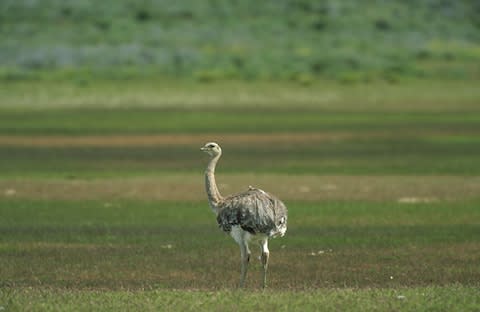
When we had planned our route through south and central Argentina, we had thought how romantic the place names sounded: Rio Seco, Rio Salado and Cabra Muerta. Only with our Spanish having improved did we realise the error of our judgment as we battled in this arid, wind-torn land; translating them to: Dry River, Salty River and Dead Goat!
Our next hurdle was heat, which would reach 111F (44C) in San Miguel de Tucumán, northern Argentina.
Six months into the expedition, we ran into Bolivia. There wasn’t a river, a sea or a mountain to cross, but everything changed. A kaleidoscope of colours and sounds crashed into us as we hit a wall of humans, cars and their squealing animals. Our Englishness had plagued us in Argentina, but all the Bolivians cared about was whether we had children.
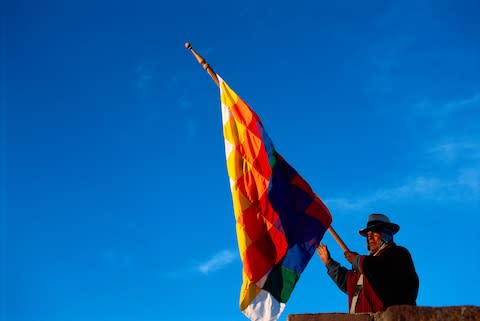
We arrived into the mountain village of Camiri and bought two drinks from a pair of women in the market, explaining that we had just run 32 miles (51km) up hill. They barely blinked before asking us the inevitable question. We gave a cursory look behind at our trailer, and shook our heads: “Sorry, no children.” At which they cackled, slapping their thighs and called us lazy.
Bolivia heralded the Amazon and our first footsteps into its mighty watershed. Later, we ran marathons back to back to avoid the Venezuelan mafia and hid in the rainforest from the gunshots that punctured the night.
10 epic races to run in your lifetime
Life was simple; our job was putting one foot in front of the other, finding a place to camp, making a fire and cooking beans and rice. When the warm Caribbean Sea finally eddied around our feet, it seemed the easiest plan would be to keep running. But that would be for another day and a future challenge.
Now? We’re back in South America, but this time on two bicycles, with two incumbents: our three-year-old son sitting behind me and our 17-month-old daughter snoring behind him in a trailer. David is pedalling through the red rainforest mud in front, accompanied by a cloud of plate-sized butterflies, pulling another homemade trailer with all our kit. Those Bolivian ladies would be proud.
A signed and dedicated copy of Running South America: With My Husband and Other Animals, published by Whittles, is available from: 5000mileproject.org/shop for £17.49. For more information, see @5000mileproject on Twitter, YouTube and Facebook.